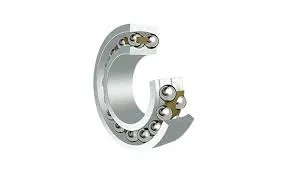
Dec . 11, 2024 10:41 Back to list
Understanding Angular Contact Bearings and Their Application in Machinery Design
Understanding Angular Contact Bearing Angles A Comprehensive Guide
Angular contact bearings are vital components in various machinery and mechanical systems, playing a crucial role in the smooth operation and longevity of equipment. These bearings are specifically designed to accommodate both radial and axial loads, making them ideal for applications where the load direction can vary. A key characteristic of angular contact bearings is their bearing angle, which significantly influences their performance and application suitability.
What is an Angular Contact Bearing?
Angular contact bearings are a type of rolling-element bearing that allows for combined loads. Unlike deep groove ball bearings, which can only support radial loads, angular contact bearings can bear axial loads thanks to their unique geometry. The inner and outer raceways are designed at an angle to each other, resulting in a point of contact that allows for the efficient transfer of load.
The Importance of Bearing Angle
The angle at which the contact occurs between the balls (or rollers) and the races is known as the bearing angle, or contact angle. This angle plays a crucial role in determining the load capacity and characteristics of the bearing.
- Load Capacity A larger contact angle increases the bearing's ability to support axial loads but decreases its maximum permissible radial load. Conversely, a smaller angle allows for greater radial load capacities but reduces the axial load capacity. Therefore, selecting the appropriate contact angle is essential based on the specific load requirements of the application.
- Performance The bearing angle also affects the operation's rigidity and precision. Bearings with larger contact angles tend to provide higher rigidity, making them suitable for applications such as machine tool spindles where precision is critical. On the other hand, bearings with smaller angles can be more efficient for applications that mainly involve radial loads.
Choosing the Right Contact Angle
When selecting an angular contact bearing, it’s important to consider several factors, including the type of load (radial vs. axial), the operating speed, and the mounting arrangement. Here are some common contact angles and their typical applications
1. 15 degrees This is a standard contact angle for bearings used in moderate load applications. This angle provides a good balance between axial and radial load capacities, making it versatile for various machinery.
angular contact bearing angle

2. 30 degrees Bearings with a 30-degree contact angle are often used in high-speed applications where axial loads may be significant. The higher angle allows for greater axial load support while maintaining acceptable radial load capacity.
3. 40 degrees Bearings with a 40-degree contact angle are designed for high axial loads and are typically used in heavy machinery and automotive applications, such as in gearboxes and differential assemblies.
Applications of Angular Contact Bearings
Angular contact bearings find use in a wide range of industries, including automotive, aerospace, manufacturing, and robotics. Some common applications include
- Machine Tool Spindles These bearings are crucial in high-speed machining processes, where precision and load capacity are paramount.
- Electric Motors Angular contact bearings help in maintaining the alignment of rotor and stator, ensuring efficient operation.
- Robotic Joints In robotics, angular contact bearings support high-load conditions and allow for precise movement.
- Gearboxes They are used in gear systems to handle both radial and axial loads effectively.
Conclusion
In conclusion, angular contact bearings are essential components that enable the efficient operation of various mechanical systems. Understanding the significance of the bearing angle is crucial for selecting the right bearing for a specific application, ensuring optimal performance, reliability, and longevity. By considering factors such as load type, operating conditions, and application requirements, engineers can effectively choose the right angular contact bearing, ultimately enhancing the performance of their machinery and systems.
Latest news
-
Grooved Ball Bearing Design and Functionality
NewsJun.04,2025
-
Concrete Mixer Bearing Load Capacity Testing
NewsJun.04,2025
-
6004 Bearing Dimensions in Robotic Joint Designs
NewsJun.04,2025
-
Advantages of Single-Row Deep Groove Ball Bearings
NewsJun.04,2025
-
Applications of Deep Groove Ball Bearings in Automotive Systems
NewsJun.04,2025
-
Innovations in Bearing Pressing Machine Design
NewsJun.04,2025
